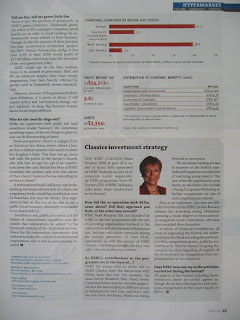Thoughtful read
first published in The Star, 05 April 2009
In December, a coalition led by Sheikh Hasina Wazed's Awami League scored a landslide victory in Bangladesh's elections.
The win was, if one reads the country's history, highly symbolic. Her father, Sheikh Mujibur Rahman, was the first president of an independent Bangladesh, in 1971. After years of conflict and political instability, Bangladeshis are hoping his daughter's victory will bring an end to the troubles.
The days before Bangladesh's birth in 1971, when what was then East Pakistan seceded from West Pakistan (what is now Pakistan), are told in Tahmima Anam's A Golden Age.
Rehana Haque is a single mother of two from East Pakistan, one of the two wings of a nation formed after the 1947 split with India. Her husband suddenly drops dead one day on the way home and her children are taken away by their uncle to Lahore in West Pakistan.
So Rehana sells some possessions and builds a rooming house with the money, a place she names "Shona", or gold in Bengali. With this source of income and a court order, she brings her children back, and every year, she celebrates this triumphant return with her tenants and neighbours.
Meanwhile, there are war-like sounds being made: To quell what it saw as East Pakistan's moves towards independence, West Pakistan launches a military crackdown in March 1971. East Pakistan's new cabinet is established in exile near the Indian border while its leader, Sheikh Mujibur Rahman, is thrown in jail.
But it isn't political strains that occupy Rehana's mind; rather, it is the strains within her own family that weigh on her: Her son Sohail, a student activist and supporter of Sheikh Mujibur, is heartbroken by the approaching marriage between sister Silvi and army officer Sabeer, who is very much an establishment man; her other daughter, Maya, has communist leanings and is rebelling.
Sohail and Maya soon join East Pakistan's freedom fighters. The son goes one step further and brings home his buddies and commanding officer, a man Rehana calls the Major, and turns Shona into a base of operations.
Spicing things up is the budding romance between Rehana and her unwanted tenant. With the memories of her late husband still strong in her mind, she grapples with her growing feelings for the mysterious Major.
The only major complaint I have about this novel is the way Rehana (mostly) tolerates her kids' flights of fancy. And how it makes me hungry: There's food in every other chapter or so, all described deliciously, biryani, jhaal moori, chapatis, laddoo. One British reviewer hungered for Indian cuisine after finishing the book. Luckily for me, my trusty neighbourhood Indian restaurant is within walking distance of my home....
But Rehana's not just a war-time supermum. She's also cultured and educated, as demonstrated by her love of Urdu poetry and fondness for Western films. Although a Muslim, she doesn't mind a sip of Mrs Chowdury's whisky-laced tea, or a few rounds of gin rummy. The world today needs more women like Mrs Rehana – or have they all been driven into hiding by loud, angry ideologues?
What Anam is trying to say is that war does horrible things to friends and families, especially a civil war that strikes so close to home. The part where the Major moves into Shona is reportedly based on true stories told to Anam by her parents about the same war, when freedom fighters stayed in their home and buried weapons in the front yard.
This is a story about the culture shared between a country now split in two, the conflict that led to that cleavage, and the sorrow and hope that came from it. A Golden Age is a beautiful story, and as soon as I closed the book I found myself pondering the worth of all the fighting that's going on right now, beamed live from the world's hottest flash points into living rooms worldwide.
A Golden Age, through Rehana's words on and feelings about Bangladesh's birth, encourages thought long after the book has been put down.
A Golden Age
Tahmima AnamJohn Murray
276 pages
Fiction
ISBN: 978-0-7195-6010-1
Categories:
Book Reviews,
The Star




















